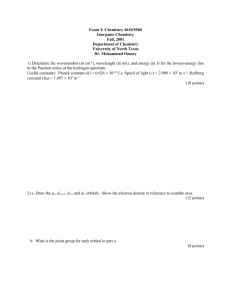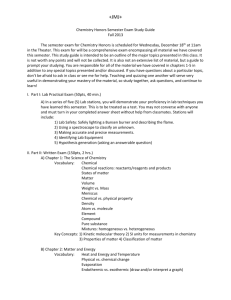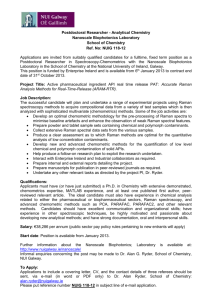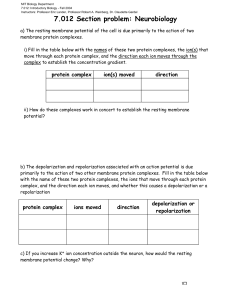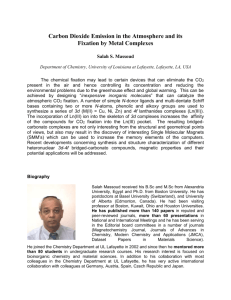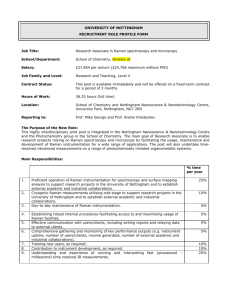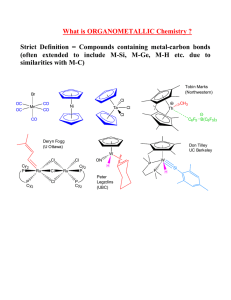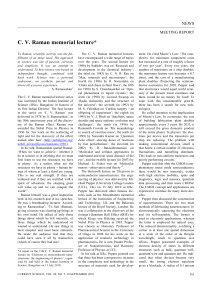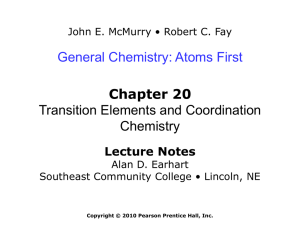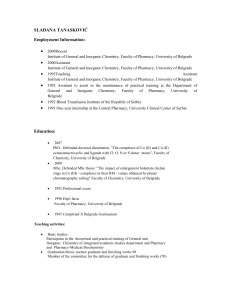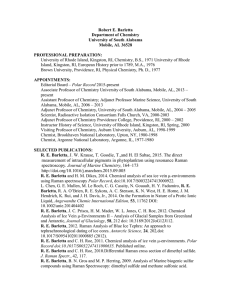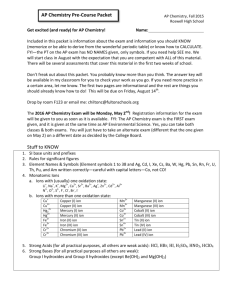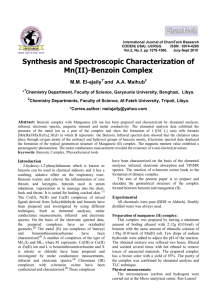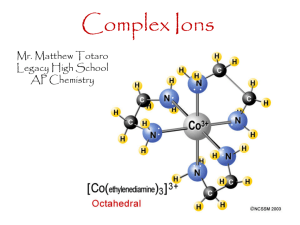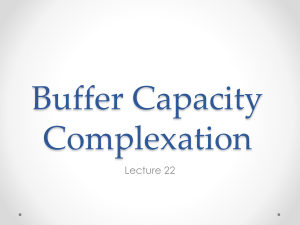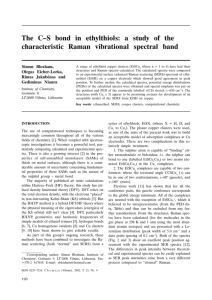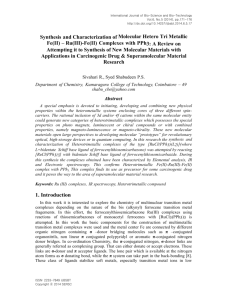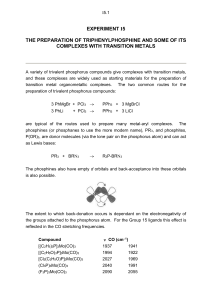Chemistry 4610/5560, Inorganic Chemistry
advertisement
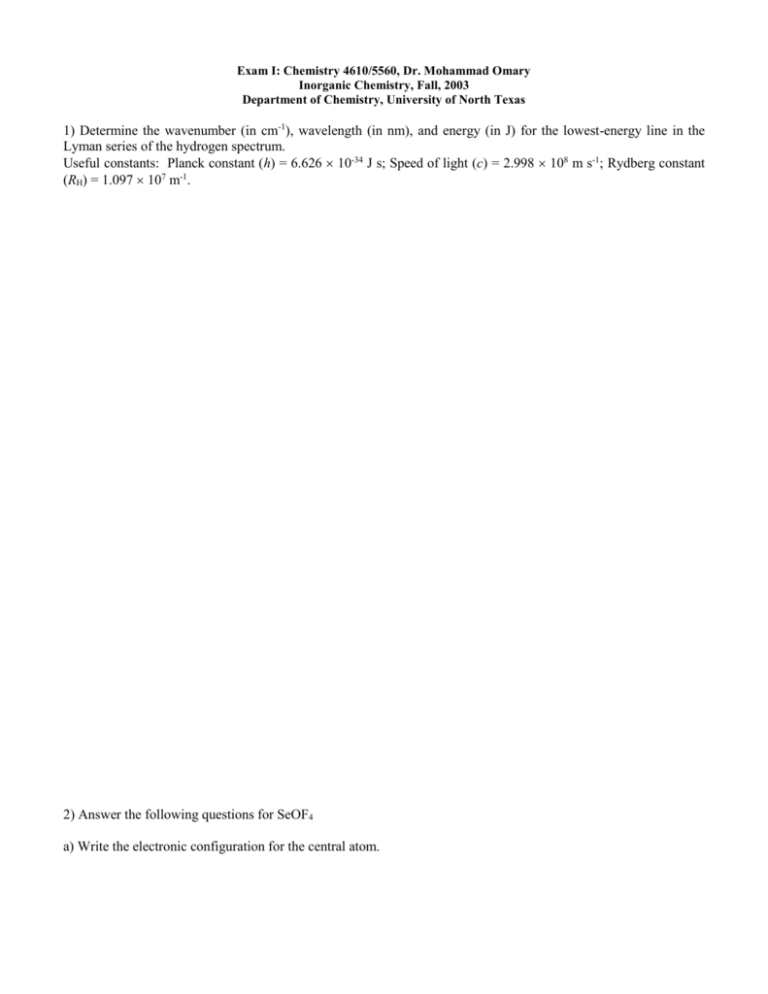
Exam I: Chemistry 4610/5560, Dr. Mohammad Omary Inorganic Chemistry, Fall, 2003 Department of Chemistry, University of North Texas 1) Determine the wavenumber (in cm-1), wavelength (in nm), and energy (in J) for the lowest-energy line in the Lyman series of the hydrogen spectrum. Useful constants: Planck constant (h) = 6.626 10-34 J s; Speed of light (c) = 2.998 108 m s-1; Rydberg constant (RH) = 1.097 107 m-1. 2) Answer the following questions for SeOF4 a) Write the electronic configuration for the central atom. b) Calculate the n, l, ml, and ms values for each valence electron of the central atom in SeOF4. It will help if you draw the electronic configuration of the electrons and label each electron with a number. c) Explain how your answer to part b illustrates: i) Hund’s rule: ii) The Pauli Exclusion Principle: d) Draw the Lewis dot structure of SeOF4 and then determine the geometry of the atoms comprising the molecule or ion (draw the structure). e) Determine whether SeOF4 is polar or non-polar. f) Determine the point group of SeOF4. 3) Pankaj Sinha, a graduate student in Dr. Omary’s group, has recently made two Au(I) complexes: [Au(PPh 3)3]+ and [Au(PPh3)2Cl]. Answer the following questions: a) Write down the electronic configuration for the Au+ ion. b) Explain why this ion has a smaller radius than that of Ag+, contrary to common trends. c) Assuming that both complexes that Pankaj made are trigonal planar and ignoring the phenyl groups, show how group theory can be used to distinguish between the two complexes based on differences in the vAu-P infrared and Raman bands. That is, determine the irreducible representations that correspond to the Au-P stretching vibrations in each complex, then determine whether each mode is IR or Raman active, and finally conclude how many vAu-P bands are expected in the IR and Raman spectrum of each complex. BONUS QUESTION a. Draw the px, dx2-y2, dxy, and dz2 orbitals. Show the electron density in reference to suitable axes. b. What is the point group for each orbital in part a
